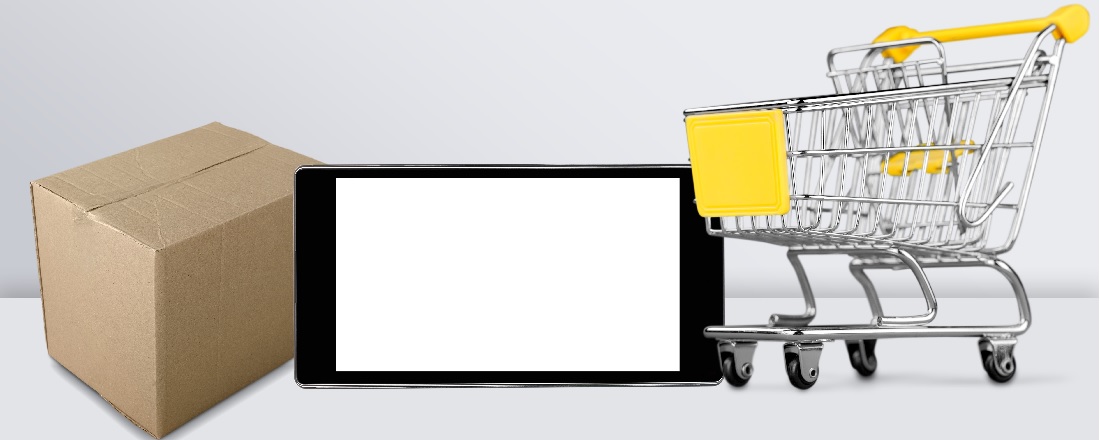Shopify Inc is a publicly traded Canadian company that offers e-commerce services which enables its users to start, manage, and grow an online store. As a pioneer in online retailing, Shopify’s easy-to-navigate system allows those with little or no technical skills to operate an online store. Users pay a subscription fee to access the services offered by the platform which range from setting up the store to payment processing.
In this blog, we will provide a detailed guide on EDI integrations in Shopify E-Commerce Solutions. We'll show you how to set up proper EDI connections that enable your digital environment to interact with other systems within your trade network. Implementing Shopify EDI Integration will position you to streamline your operational processes, improve relationships with trading partners, and drive growth within the business.
What is Shopiy EDI Integration?
Shopify EDI integration allows you to seamlessly exchange business documents such as purchase orders, invoices, and shipping notices electronically with your trading partners, such as suppliers, retailers, and distributors. The purpose of EDI is to enable seamless and automated communication between different entities, such as trading partners, without the need for human intervention.
What Does EDI Have To Do With Shopiy?
Selling online on Shopify platform, and with the introduction of drop-shipping, EDI plays a crucial role for several reasons. Here are some key points that highlight the importance of EDI in this context:
- Many big manufacturers and distributors ask for EDI integration for greater efficiency and speedy processes in partner communication.
- Shipping business partners also ask EDI integration.
- Modern consumers expect transparency and real-time information, desiring detailed insights into the journey of their orders from purchase to delivery.
The scenarios mentioned above necessitate seamless system-to-system integration among various unrelated or diverse systems and platforms. At present, the majority of large companies and retailers have established and invested in Electronic Data Interchange (EDI) platforms and standards over the course of several years. Companies are actively discovering new applications and functionalities within their EDI platforms, leading to improved efficiency and realizing measurable benefits from the resources they've dedicated to implementing and maintaining EDI systems.
What Types of Businesses Use Shopiy EDI Integration?
From small businesses to large corporations and even those using eCommerce platforms such as Shopify, all types of businesses stand to benefit from EDI. This system proves useful across the board with all businesses because EDI allows integrated parties to communicate effectively, even about changing factors, such as inventory levels. In other words, companies across sectors and of all sizes, especially those dealing with international supply chains, are able to harness EDIabusively streamline communication and manage resources that are in constant flux.
When EDI capabilities are implemented between a business and its partners, the firm is able to focus on improving core functions as well as synergetic collaboration within the supply chain, thus benefiting their customers. These approaches are especially important for businesses looking to broaden their channels or enter new territories because EDI speeds up business activities. In addition, since many large companies require their business partners to have EDI, firms that adopt EDI policies are able to realize a host of new business opportunities by accessing a wider pool of trading partners. Simply put, EDI not only enhances business efficiency but also opens doors to increased collaboration and growth opportunities.
Finally, Shopify is useful to companies aiming to expand their eCommerce capabilities. The integration of EDI with the Shopify platform enhances both eCommerce and managerial aspects, including automation optimization and in-depth performance analysis.
Why You Should Integrate Shopify With Your EDI
To streamline communication and data sharing, companies implement and integrate a Shopify system with an Electronic Data Interchange (EDI) solution. Most retailers and EDI-enabled businesses have EDI prerequisites for their suppliers; as a result, the onboarding process is expedited for suppliers. With new business partners who have these prerequisites, faster transactions can be set up. The seamless onboarding features of EDI facilitate swift automated order management processes, ideal for businesses of all sizes. Here are the top three reasons why you should integrate EDI with your Shopify store:
- While building and upholding your online identity through dropshipping, compliance with EDI standards will likely come from your suppliers to enable supply chain automation communication.
- For large customer pre-booked businesses, EDI assures responsive communication during customer interaction, instantly relaying information about order status updates whenever customers check the system.
- For companies that process large numbers of shipments each day and work with different shipping services, an EDI integration would enhance the flow of information between your Shopify store and the shipping partners, balancing logistics and order fulfilment operations.
Shopify EDI Integration Benefits
- Increased efficiency:: Save your precious resources by automating order processing, invoicing, and escalations of document exchanges.
- Reduced errors: Eliminate data entry errors that can slow down the entire process or give rise to disputes.
- Improved customer satisfaction: Customers are happy when their orders are fulfilled quicker and transactions are accurate.
- Compliance with trading partner requirements: Many other bigger retailers and distributors conduct business with EDI restrictions.
Best Practices When Integrating Shopify to EDI
Below are some practices that are prudent to follow when integrating your Shopify store with EDI:
Planning and Requirements:
- Clearly define your goals and needs: Establish what automation (orders, invoices, inventory) you wish to execute and with which trading partners you intend to share them.
- Understand your trading partner requirements: Different partners could work with different EDI formats, and standards. Make sure that the system you settle on can cater to their requirements.
- Evaluate your technical expertise: Do you have the internal capacity to undertake EDI integrations or will you require outside assistance?
Select a Reliable EDI Solution:
As a best practice, choose first a well-known and reliable EDI provider that does not limit a business’s growth and other specific requirements. Focused business require advanced features such as advanced controls. Unlike other businesses, these rely on market leading service providers focusing on ease of use and fast integration. These do not need to worry about whether the selected EDI solution works with Shopify or not. Other businesses do not have to worry if their selected EDI solution works with Shopify or not. They have the freedom to worry about circumventions that further aids the selected solutions streamlined workflow with Shopify’s infrastructure.
Implementation and Maintenance:
- Comprehensive testing: Engage in thorough testing with your trading partners so there is smooth end data exchange and discovery of issues prior going live.
- Clear documentation: Capture all steps in the integration such as data mapping and documentation as well as any encountered problems and solutions tailored for future use.
- Regular monitoring: Observe your EDI integration actively, including, but not limited to, shifts within EDI frameworks alongside changes by partners that are integrated to your system.
- Data security: Select a solution that adopts data protection methodologies such as best practices in order not to compromise data security best practices of confidential information.
Additional Tips:
- Think ahead: Automating one document type with a few trading partners is advisable for those new to EDI.
- Seek expert help: EDI experts and managed service providers can be engaged for tailor made solutions for complex in house resource limitations.
- Stay informed: Sustain knowledge of what’s trending in EDI technology for more effective transformation to the use of business integration.
Following best practices will guarantee smooth Shopify EDI integration while improving business efficiency and accuracy.
Shopify EDI Integration from the Inofocn Systems Experts
Infocon Systems is a leading cloud-based EDI and API Integration Solutions company which integrates with Shopify maintaining a seamless workflow between two trading partners. This integration ensures complete automation of all of your financial and inventory documents in and out of both systems resulting in faster order-to-cash cycles, reduced errors and in-house costs.
Benefits of Shopify's Integration with Infocon Systems
- Fast Set up: Get a fast setup of your EDI Domain within 24 hours and easy web-portal training that takes 30 minutes.
- Rapid Deployment of Trading Partners: Onboard new trading partners with our easy-to-use scalable solution that grows with your business needs.
- EDI Training: Learn how to integrate Shopify and Infocon Systems with the help of EDI experts.
- Security and Support: Keep your data safe at all times and get 24/7/365 access to our experienced technical teams via phone and e-mail.
- Flexible Communication: Connect with all major Value Added Networks and other specialized communication networks.
- Data Mapping: Cross-reference data and use field defaults to map Fishbowl's custom fields with Infocon Systems.
- Document Formatting: Ensure invoices, sales orders, purchase orders, packing slips, receipts, and more are formatted correctly for each trading partner.
To learn more about how Infocon Systems can take care of your EDI needs, please don’t hesitate to give us a call at +1 888-339-0722 or email sales@infoconn.com. We’d love to hear from you.
Frequently Asked Questions (FAQs)
1. What is Shopify EDI integration?
Shopify EDI integration connects your Shopify store with your business partners electronically using EDI. This enables the automatic exchange of various documents.
2. Why do I need EDI integration with Shopify?
For some large retailers, distributors or suppliers such as Walmart, Target, and Amazon, having EDI integration is a requirement for doing business. These retailers will expect you to exchange documents using EDI in a set format. Such integration helps in meeting requirements and automates the transfer of documents, minimizing errors as well as manual work.
3. How does EDI integration work with Shopify?
As an example, an EDI provider (such as Infocon Systems) acts as a middleman for Shopify and your business partners. Providers translate data from Shopify into the required EDI formats, and the other way around.
4. What types of EDI documents are commonly used in Shopify integrations?
- EDI 850 – Purchase Order
- EDI 810 – Invoice
- EDI 856 – Advance Ship Notice (ASN)
- EDI 846 – Inventory Inquiry/Update
- EDI 855 – Purchase Order Acknowledgment
- EDI 940/945 – Warehouse shipping orders and confirmations
5. Do I need a developer to set up EDI with Shopify?
No, the majority of EDI service providers provide fully managed EDI solutions which do not require any coding or an in-house technical staff. They take care of the mapping, testing, and support.
6. How much does Shopify EDI integration cost?
Pricing ranges considerably based on:
- Number of trading partners
- Document volume
- Type of integration (direct API vs. file-based)
- Service level (self-service vs. managed)
Depending on the complexity, expect anywhere from $ 100/month to several thousand.
7. What are the common integration methods for Shopify EDI?
- API Integrationm
- Flat-file Integration (CSV/XML)
- Middleware/Connector




